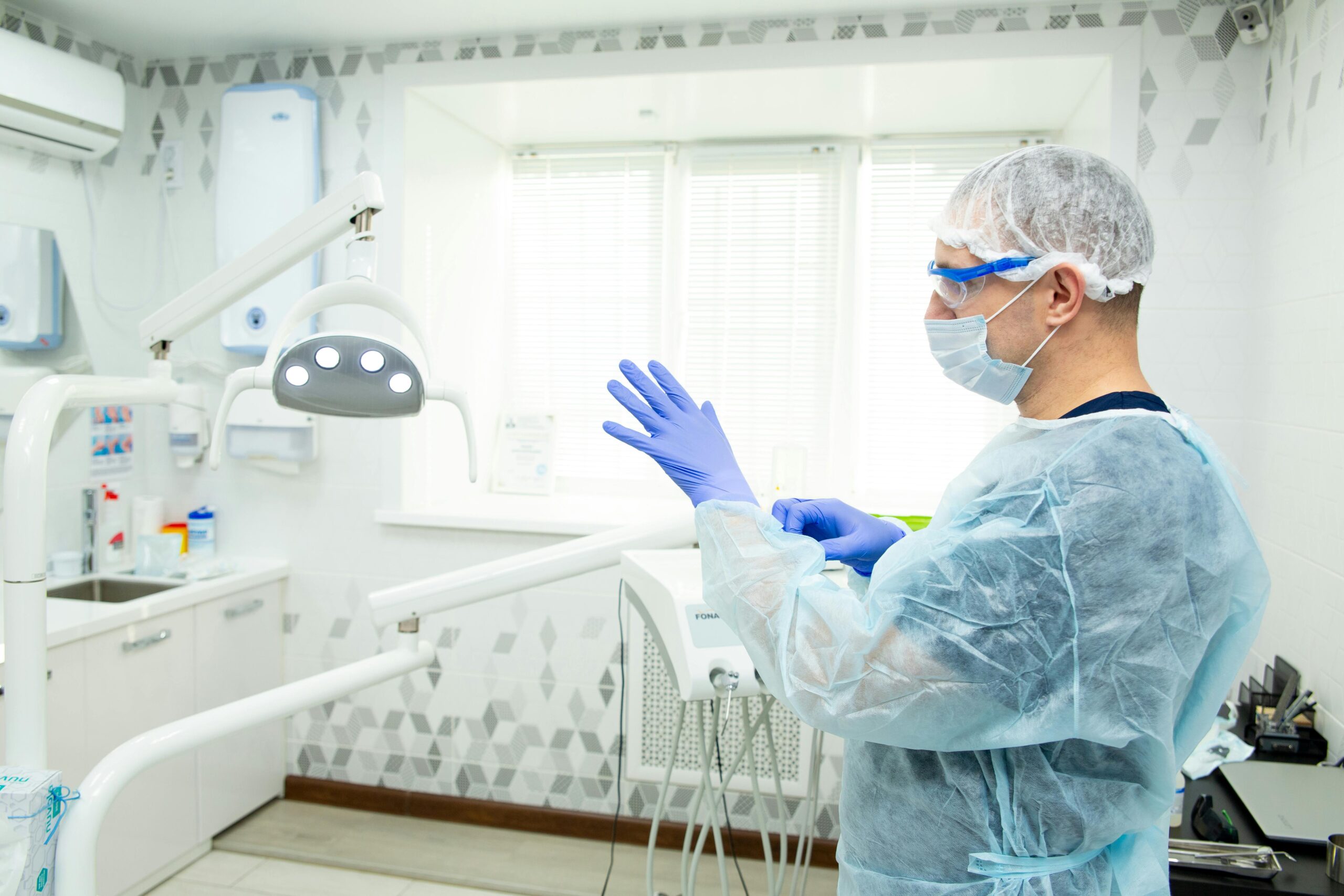
Emergency rooms are the busiest areas in any health care facility. The odds of infection being transmitted increase because patients flow in at any time. Thus, understanding How To Avoid The Spread Of Infection In Emergency Rooms is crucial for both the staff and patients.
Germs and viruses can quickly transfer from person to person in these fast-paced environments or from surface to surface. Emergency rooms are repeatedly exposed to outbreaks of respiratory infections to contact-transmitted diseases. However, these risks can be totally minimized by using infection control practices effectively.
Infection prevention requires teamwork, discipline, and consistent hygiene measures. Each healthcare worker, from the nurse to the janitor, can play a part in helping to keep the environment safe and sterile. In this article, we will explore essential strategies that every emergency department can adopt to reduce infection risks and safeguard health.
With established norms for infection control and creating a culture of awareness, ERs can protect patients, staff, and visitors alike. Let’s explore the pragmatic steps to make emergency rooms safer and cleaner for all.

Understanding Infection Risks in Emergency Rooms
The caseloads are high, and the conditions are always unpredictable, making emergency rooms a pressure cooker, with medical teams attending to urgent health situations. If precautions are not taken, infections could easily spread. Understanding these risks is the first step toward effective prevention.
The major risk for infection is overcrowding. Many hospitals have ERs working beyond capacity, putting people close to one another. Thus, airborne and droplet-borne infections will soon prevail, such as influenza or COVID-19. Besides this, direct contact with contaminated surfaces or body fluids increases transmission risks for bacteria and viruses.
Other factors include time pressure: When working in emergencies, for instance, there is always the need to rush, and hygiene steps are thus skipped. Even a brief moment of not washing your hands or disinfecting may lead to contamination.
Patients with unknown infectious diseases also pose a threat. Since the emergency personnel treat people without any previous medical history, the isolation of infectious patients becomes essential very quickly. Introduction of symptom-based triaging systems may help avert outbreaks within the ER.
A general understanding of infection risks keeps the medical teams alert and proactive. It allows hospitals to build their defenses by applying targeted hygiene and infection control.
Standard Precautions Every ER Should Follow
Standard precautions form the foundation of infection control in any healthcare setting. These need to be applied consistently and stringently in emergency rooms for the protection of staff and patients alike.
The best defense against the spread of infection, however, is proper hand hygiene. Medical staff should practice thorough hand-washing before and after patient contact, after glove removal, and after touching any surface that may be contaminated. Alcohol-based hand sanitizers should be readily available throughout the ER.
Next, the use of PPE-including gloves, masks, gowns, and face shields-should always be tailored to the risk of exposure. Proper procedures for donning and doffing should be carried out to avoid self-contamination.
Waste management also plays an important role. Used needles, gloves, and any other contaminated materials are to be disposed of in appropriately labeled biohazard containers. Sharps must never be recapped or disposed of inappropriately.
Surfaces and equipment should be disinfected regularly using hospital-grade cleaning agents. High-touch areas like bed rails, doorknobs, and keyboards need frequent attention. Sterile techniques should be practiced during invasive procedures to minimize the risk of healthcare-associated infections.
Emergency rooms can significantly decrease the spread of infection and make the environment safer for all through stringent adherence to these standard precautions.
The Role of ER Staff in Infection Control
All personnel in the emergency department play an important role in infection prevention. Physicians, nurses, technicians, and cleaning teams all have to combine efforts in hygiene maintenance and compliance with infection control rules.

Training is essential. Regular workshops and refresher courses keep staff updated on the latest infection control guidelines. They also reinforce best practices like proper hand hygiene, PPE use, and waste disposal. Continuous learning ensures that everyone remains aware of evolving infection risks and prevention strategies.
Teamwork enhances effectiveness. When the staff communicate clearly and coordinates responsibilities, the chances of missed procedures decrease. A culture of accountability ensures that everyone participates in maintaining a safe environment.
Another very important factor is prompt reporting. Once a staffer comes in contact with any such infection, due reporting accelerates the procedures for necessary testing, medication, and containing the effects. Transparency thus averts small lapses from growing into larger outbreaks.
Leadership plays a very important role. Supervisors should model the best possible infection control behavior and monitor compliance through observation and audits. Their guidance helps to raise awareness and motivate their team consistently.
Ultimately, infection control in ERs depends on human behavior. Consistent practice of safety measures and a strong sense of shared responsibility help reduce infection transmission effectively.
Environmental Cleaning and Disinfection in Emergency Rooms
It is important to prevent the spread of infections, and a clean environment is tantamount to achieving this. Emergency rooms have continuous traffic, so maintaining cleanliness requires a structured and ongoing effort.
Every area of the hospital, from waiting rooms to treatment bays, needs a set cleaning schedule. High-touch areas-stretchers, counters, and door handles-have to be disinfected multiple times per shift. Detailed checklists should be followed by the cleaners for proper sanitation.
The choice of disinfectants also matters. Using EPA-approved cleaning agents effective against a broad range of pathogens ensures optimal results. Cleaners should allow appropriate contact time for disinfectants to eliminate germs completely.
The contribution of air quality to infection control is quite significant. Good ventilation and proper maintenance of HVAC systems reduce airborne pathogens. Filters should be periodically checked and replaced in order to keep the airflow clean. Negative-pressure rooms must be used for highly contagious patients.
Additionally, proper waste disposal and linen handling prevent cross-contamination. Contaminated linens must be placed in designated bags and cleaned according to infection control standards.
By focusing on regular cleaning, air purification, and proper waste disposal, hospitals can maintain their emergency rooms as safe environments both for patients and medical professionals.
Managing Patients with Infectious Diseases
Management of infectious patients in the accident and emergency department is both fast-paced and needs strict protocols. Good management reduces the transmission of diseases to other patients and also staff.
The first step involves effective triage: patients should be screened for symptoms such as fever, coughing, or rashes upon arrival. Early identification of potential infections provides the necessary guidance toward isolation and treatment procedures.
Thereafter, isolation practices for contagious diseases should be dealt with promptly upon suspicion. Negative pressure rooms should be provided or specified isolation areas to avoid the airborne spread of diseases.
Healthcare workers should wear proper PPE in every contact made with infectious patients. Gowns, gloves, masks, and face shields can minimize the risk of exposure. Additionally, staff must avoid unnecessary contact and practice proper disinfection after each contact.
It also involves communication. Coordination with the infection control department ensures that lab samples, waste, and transfers of patients are appropriately managed. Each step has to be performed according to predetermined safety measures.
Finally, proper documentation of infection cases supports traceability and monitoring. Tracking infection patterns helps identify areas that need additional control measures.
With these steps, emergency rooms can efficiently manage infectious cases while protecting everyone within the facility.
Visitor and Patient Education for Infection Prevention
Infection prevention in emergency rooms relies on education. Both patients and visitors need to be educated on hygiene rules to support safety in hospitals.
Signs in the hospitals should remind all persons to wash their hands, wear masks, and keep a distance. Such visual prompts make following good practice all the time less dependent on close supervision.
Allow only a few visitors, particularly during outbreaks or flu seasons. Limiting them would reduce crowding and minimize the risks of cross-contamination. When visitors are allowed, they need to wear PPE as required and avoid all unnecessary physical contact.
Patients, too, should receive brief guidance upon arrival. Encouraging them to cover coughs, use tissues, and practice hand hygiene helps minimize infection risks. Medical staff can provide leaflets or short explanations during check-ins.
Moreover, creating awareness about why these rules matter builds cooperation. When patients and families understand the purpose behind infection control policies, they’re more likely to comply willingly.
Effective communication among hospital staff, patients, and visitors creates trust and a shared responsibility that promotes a clean, safe emergency environment.
The Role of Technology in Infection Prevention
Modern technologies considerably enhance the infection control activity in emergency rooms, from automated systems to digital hygiene monitoring, and innovative tools make prevention more efficient.
For instance, UV disinfection systems can quickly sterilize rooms and equipment between patients. These systems use ultraviolet light to destroy bacteria, viruses, and fungi without using harsh chemicals.
Automated hand hygiene monitoring systems encourage compliance. Tracking the frequency with which staff members wash their hands and offering immediate feedback enables facilities to increase compliance with hygiene standards.
In addition to this, digital medical record systems reduce the quantity of physical paperwork. With fewer shared documents, the contact points for germs are fewer. The tablets and mobile devices of medical teams can also be disinfected using UV or alcohol-based wipes.
Air purification technology further helps remove airborne contaminants. Advanced HEPA filters and UV-C air sanitizers can significantly reduce the spread of respiratory infections.
Technology not only improves efficiency but also builds accountability. With proper integration, hospitals can monitor infection data, analyze trends, and work to continually improve safety protocols.
By combining human diligence with modern innovation, higher levels of cleanliness and protection are achievable for emergency rooms.
Continuous Monitoring and Auditing for Infection Control
Continuous monitoring and evaluation of infection control are performed. Audits help hospitals regularly identify points of weakness and maintain consistent standards of hygiene.
Infection control teams should conduct routine inspections of ER practices, such as hand hygiene, waste disposal, and PPE usage. Observations can reveal compliance gaps that need immediate attention.
Infection rate data collection and analysis help in understanding the trends and any possible problem areas. This, when tracked over a certain period of time, enables hospitals to assess their strategies concerning infection control.
Feedback systems are very important in bringing about improvement. Results shared with staff, coupled with constructive suggestions, encourage better performance. Recognition for good practices also serves to boost motivation and accountability.
Hospitals should revisit their infection control policies from time to time, ensuring that they follow the current health guidelines and research findings. This would adapt the ERs for the emerging threats like new viruses or bacteria resistant to antibiotics.
Ultimately, monitoring and auditing become a cycle of continuous improvement. They transform infection control from being a one-time activity to a culture of continuous safety and excellence.
Conclusion: Building a Culture of Safety in Emergency Rooms
requires teamwork, commitment, and vigilance around the clock. When the modes of transmission are understood and preventive measures applied consistently, it goes a long way in ensuring the safety of patients, staff, and visitors alike. Key practices such as hand hygiene, the use of PPE, surface disinfection, and proper isolation remain at the forefront of infection control. These are further strengthened by continuous education of staff, good environmental maintenance, and technological innovations. Ultimately, knowledge about how to prevent infection transmission in emergency rooms is not a matter of rules but one of commitment.
When every team member values cleanliness and safety, infection control becomes an integral part of everyday operations. The development of a culture of awareness, responsibility, and collaboration ensures that emergency departments remain safe places where healing truly commences.



